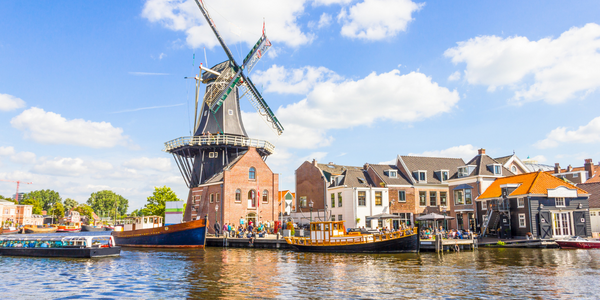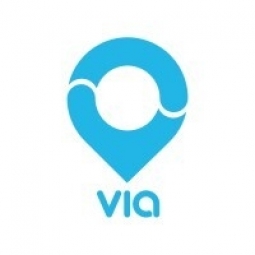Technology Category
- Functional Applications - Transportation Management Systems (TMS)
Applicable Industries
- Cities & Municipalities
- Transportation
Applicable Functions
- Logistics & Transportation
Use Cases
- Public Transportation Management
- Transportation Simulation
About The Customer
The customers of NRT OnDemand are the residents of the western Niagara region, including the areas of Niagara-on-the-Lake, Old Town, and Virgil. These residents were previously underserved by the traditional fixed-route transit system. The customers include a diverse demographic, from students to seniors, who require reliable and efficient transportation to community centres, GO Transit connections, and other point-to-point destinations. The service allows them to book rides through an app or by phone, providing them with a convenient and flexible transportation solution.
The Challenge
The western Niagara region in Canada, a mix of rural and urban areas, was struggling with providing efficient and wide transit coverage for its residents. The Regional Municipality of Niagara was grappling with the challenge of ensuring that residents could access community centres, GO Transit connections, and other point-to-point destinations conveniently. The traditional fixed-route transit system was proving inadequate in meeting the diverse transportation needs of the region. The Municipality, therefore, partnered with Via Strategies, Via’s consulting team, to explore the feasibility of an on-demand transportation system that could provide better coverage and improved service.
The Solution
In August 2020, Via and Niagara launched NRT OnDemand, a turnkey service in the western part of Niagara Region. The service uses 10 vans, including accessible vehicles, and covers the entire region. The service was later expanded by two vans to include Niagara-on-the-Lake, serving the Old Town and Virgil, and providing connections to regional transit in Glendale. For both west Niagara and Niagara-on-the-Lake, riders can book rides through an app or by phone. Special concession fares are available for students and seniors. The service has exceeded expectations, with ridership growth remaining strong despite the challenging market conditions brought about by the COVID-19 pandemic.
Operational Impact
Quantitative Benefit

Case Study missing?
Start adding your own!
Register with your work email and create a new case study profile for your business.
Related Case Studies.

Case Study
Turning A Stadium Into A Smart Building
Honeywell created what it called the “intelligent system” for the National Stadium in Beijing, China, turning the venue for the opening and closing events at the 2008 Summer Olympics into a “smart building.” Designed by highly controversial artist Ai Weiwei, the “Bird’s Nest” remains one of the most impressive feats of stadium architecture in the world. The 250,000 square meter structure housed more than 100,000 athletes and spectators at a time. To accommodate such capacity, China turned to Honeywell’s EBI Integrated Building Management System to create an integrated “intelligent system” for improved building security, safety and energy efficiency.
.png)
Case Study
Smart Street Light Network (Copenhagen)
Key stakeholders are taking a comprehensive approach to rethinking smart city innovation. City leaders have collaborated through partnerships involving government, research institutions and solution providers. The Copenhagen Solutions Lab is one of the leading organizations at the forefront of this movement. By bringing together manufacturers with municipal buyers, the Copenhagen Solutions Lab has catalyzed the development and deployment of next-generation smart city innovations. Copenhagen is leveraging this unique approach to accelerate the implementation of smart city solutions. One of the primary focus areas is LED street lighting.

Case Study
Airport SCADA Systems Improve Service Levels
Modern airports are one of the busiest environments on Earth and rely on process automation equipment to ensure service operators achieve their KPIs. Increasingly airport SCADA systems are being used to control all aspects of the operation and associated facilities. This is because unplanned system downtime can cost dearly, both in terms of reduced revenues and the associated loss of customer satisfaction due to inevitable travel inconvenience and disruption.

Case Study
IoT-based Fleet Intelligence Innovation
Speed to market is precious for DRVR, a rapidly growing start-up company. With a business model dependent on reliable mobile data, managers were spending their lives trying to negotiate data roaming deals with mobile network operators in different countries. And, even then, service quality was a constant concern.

Case Study
Buoy Status Monitoring with LoRa
The Netherlands are well-known for their inland waterways, canals, sluices and of course port activities. The Dutch Ministry of Infrastructure indicates that there are thousands of buoys and fixed items in and near water environments that would profit from IoT monitoring. One of the problems with buoys for example, is that they get hit by ships and the anchor cable breaks. Without connectivity, it takes quite some time to find out that something has happened with that buoy. Not to mention the costs of renting a boat to go to the buoy to fix it. Another important issue, is that there is no real-time monitoring of the buoys at this moment. Only by physically visiting the object on the water, one gains insight in its status.








